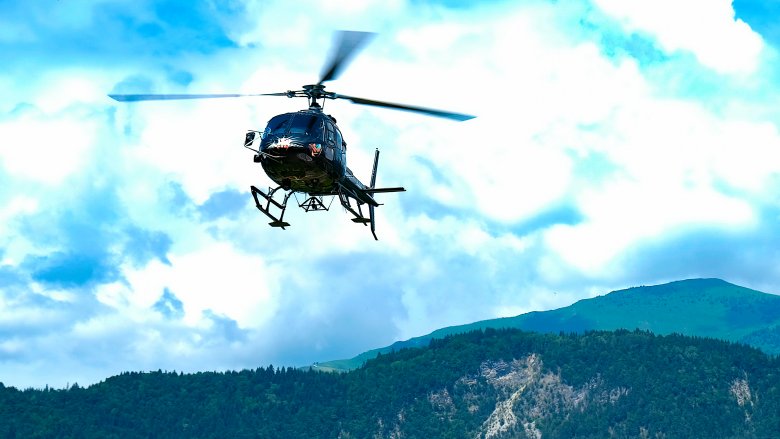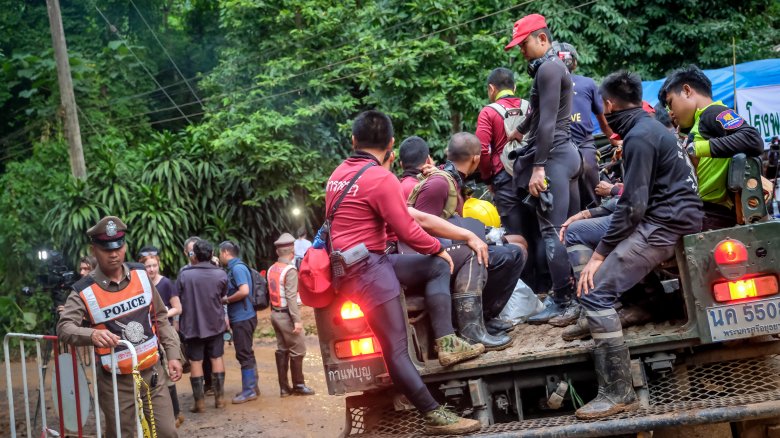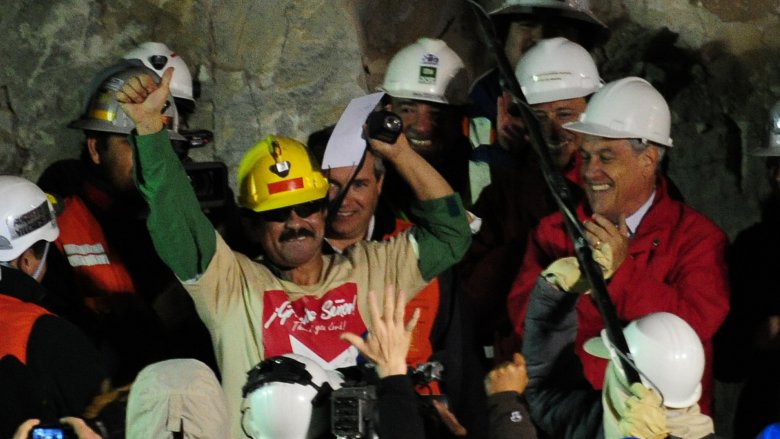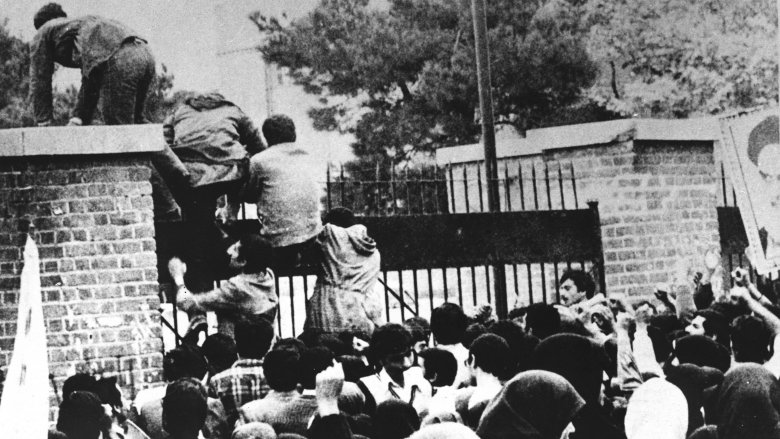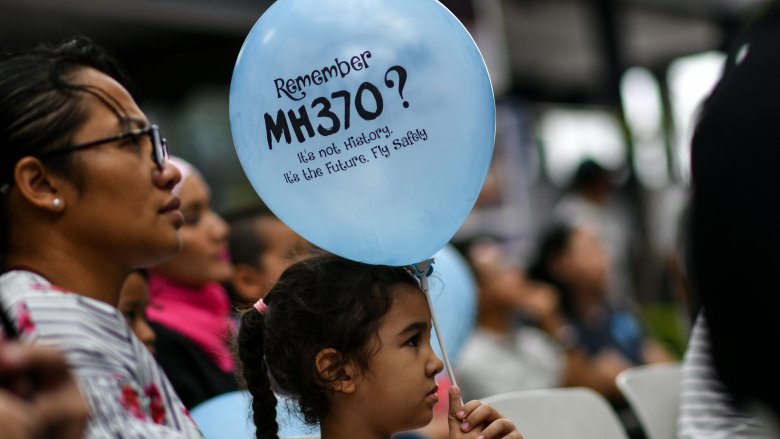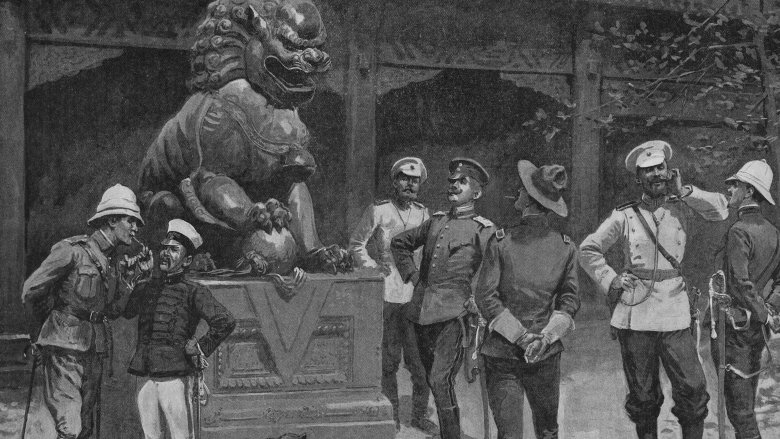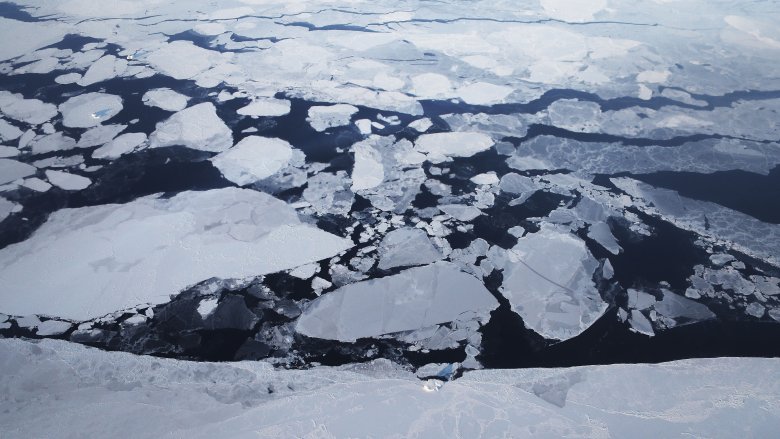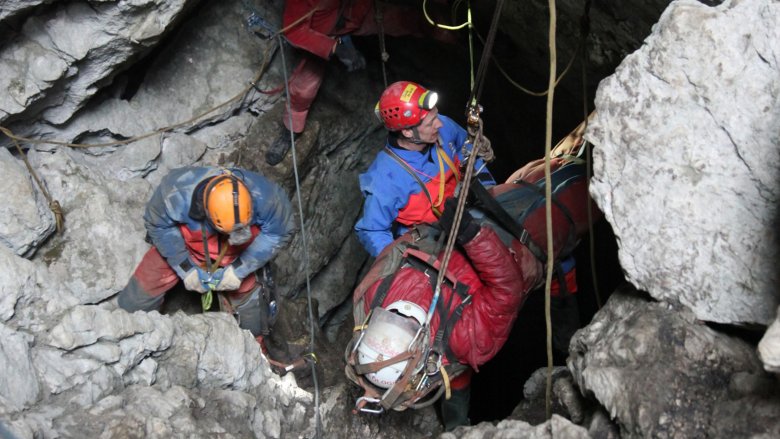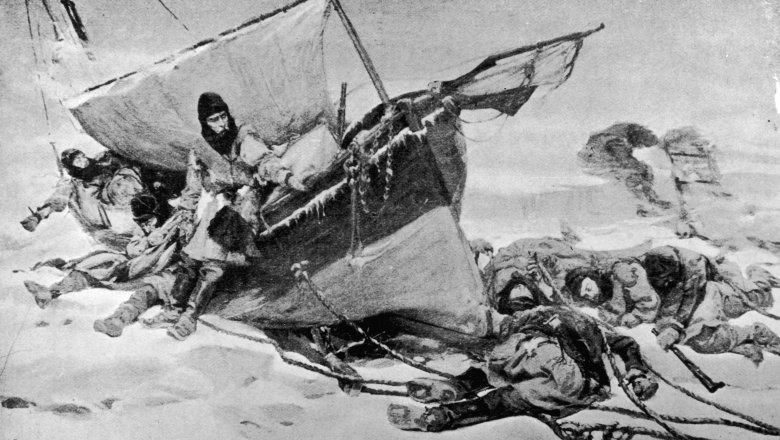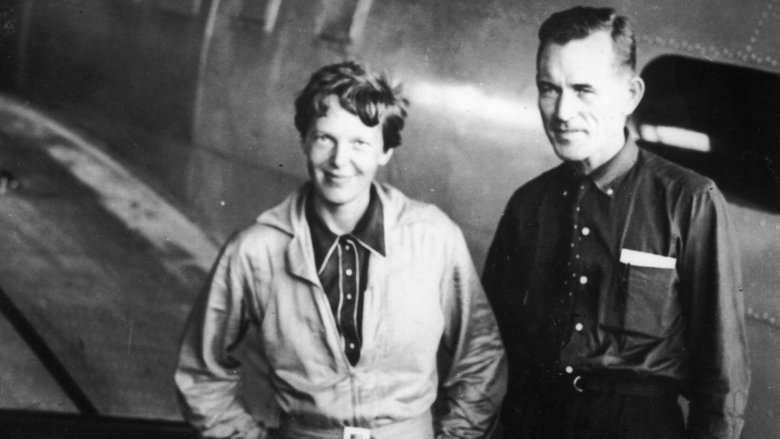The Most Expensive Search And Rescue Missions Ever
If you ever get lost in some deep, Bigfoot-laden woods you're definitely going to hope that someone out there is ready, willing, and able to mount a search and rescue mission. We have an expectation that, if we're ever in trouble, some hero is going to be looking out for us eventually. And people do that every single day around the world, putting their own safety on the line to save others. But have you ever stopped to wonder what those missions cost? These things don't happen often, but when they do, they can be massive undertakings involving hundreds and even thousands of people coordinating across numerous agencies. Rescue missions can take days or even weeks depending on the circumstances, and the expenses are going to rack up with each passing moment.
The United States Coast Guard has a yearly budget for search and rescue in excess of $750,000. For 2018 it earmarked $800,000. That seems like a heck of a lot of money until you consider just how expensive some of history's greatest search and rescue missions have been.
The Thai soccer team rescue had a dire price
On June 23, 2018, a Thai soccer team of 12 boys had just finishing their weekly soccer practice and decided to go on a little adventure with their coach. The boys planned to head into a cave and write their names on the wall because what else does a soccer team do after practice?
Unbeknownst to the boys and their coach, heavy rains started falling after they entered the cave and flood water rose high enough to block the entrance and trap them inside. Officials feared any rescue effort would be nearly impossible. Luckily, they made it happen.
The search took more than a week, and the boys stayed in the cave another week after being found while a rescue plan was formulated. Unfortunately, one of the rescuers, Thai Navy SEAL Saman Gunan, lost consciousness as he laid out oxygen tanks along the rescue route. Efforts to resuscitate him were unsuccessful. Once started, the rescue took three days — the boys exited in small groups, covering 2.5 miles of flooded tunnel with the help of the brave rescue divers. While we don't yet know the financial cost of the rescue, the price Gunan paid made it incredibly high.
The Chilean mining accident took a huge toll
On August 5, 2010, the main ramp into a mine near Copiapo, Chile, collapsed with 33 miners still inside, 2,300 feet down. It was another two weeks before anyone was able to even communicate with the men trapped below. They had each been living on two spoonfuls of tuna accompanied by a tiny ration of milk, crackers, and peaches every other day, spreading a two-day emergency food supply between 33 men, according to NBC News.
It was 69 days before the miners were actually rescued, and the mission made worldwide news. The hole initially drilled down to where the men were trapped had to be widened enough for a human. Doing this through solid rock was no small undertaking.
The Chilean government initially covered the cost of the rescue, which involved hundreds of workers and three massive drilling operations (Plan A, Plan B, and Plan C). Two years later, the government sued the company that owned the mine in an attempt to recover some of the $22 million spent on the rescue.
The Iranian hostage crisis was a disaster
Way back in 1979, Iranian militants took over the U.S. Embassy in Tehran. This kicked off what is widely known today as the Iranian Hostage Crisis. Militants loyal to the Ayatollah and angry at perceived U.S. interference in Iran entered the embassy and took 66 people hostage. Though a handful were soon released, over 50 people remained in captivity in the embassy for a total of 444 days which, if you're keeping track, is an incredibly long time to be a hostage.
Though President Jimmy Carter tried several tactics to get the hostages released, from negotiations to sanctions, nothing was working. A new option was considered — a rescue mission called Operation Eagle Claw. Military personnel would be sent in to take the hostages by force and end the protracted standoff once and for all. It probably sounded like a great idea on paper.
The plan involved secretly flying jets, refeuling planes, helicopters, and trucks into Iran. They would meet up and send a covert 90-man assault team into the embassy to kick some butt, Rambo-style. What no one accounted for was the sandstorm. Three helicopters were taken out of commission in the storm, and the mission had to be called off. Then a fourth helicopter crashed into a transport plane and eight men died. It was an utter failure with a price tag of $193 million and eight lives, with absolutely nothing to show for it.
The search for MH 370 was exhaustive and fruitless
Malaysia Airlines Flight 370 disappeared on March 8, 2014. Two-hundred twenty-seven passengers and 12 crew members were never heard from again after the flight lost radio contact, deviated from its flight path, and disappeared from radar. It was never found.
An international search and rescue mission was undertaken to determine the fate of Flight 370, but with little success. Nearly 30 countries were involved in the search including the U.S., China, Australia, and Malaysia.
Speculation was that the plane went down in the Indian Ocean or the South China Sea, far from the expected flight path but consistent with the last known whereabouts of the plane. Reports of floating debris in the ocean were investigated, but nothing significant was ever found. Numerous ships and planes, both military and civilian, were employed during the search effort, according to Australia's ABC News. The search eventually expanded to cover 11 different countries and massive sections of ocean.
Australia led much of the ocean search efforts throughout the spring of 2014 but eventually had to give up. The flight was officially declared as having gone down somewhere over the Indian Ocean, but no debris was ever found. According to Time, Malaysia spent $8.6 million on the search effort. Vietnam was in for $8 million, the U.S. spent $11.4 million, and Australia spent a whopping $43 million.
The Siege of International Legations was unlike anything before or since
You've probably heard of the Boxer Rebellion before, which sounds like the basis for a pretty awesome kung-fu movie, all things being equal. A group called the Society of the Righteous and Harmonious Fists staged a peasant uprising in China in the year 1900. Their goal was to force out any foreign or Christian influence. (It became known as the Boxer Rebellion because Westerners referred to martial arts as Chinese boxing.)
During the rebellion, a group of around 3,700 individuals including American and Japanese citizens plus some Chinese Christians, were forced into the Peking Legation Quarter. It wasn't until the Eight Nation Alliance arrived that the siege was ended.
The Eight Nation Alliance consisted of soldiers from the USA, Britain, France, Germany, Italy, Japan, Russia, and Austria-Hungary. Around 400 troops descended on Peking and made short work of the Boxer forces. The British were the first into the city, having found a completely unguarded gate to enter; U.S. forces simply scaled the walls. Though the siege lasted 55 days, the Battle of Peking took about a day.
After everyone was freed, the Chinese government agreed to pay an indemnity to the nations that helped quell the rebellion. The amount was calculated at $330 million. Keep in mind, that was 1901 U.S. dollars, so adjusting for inflation that's about $9.3 billion.
Canada broke the bank saving tourists who didn't need saving
The northern part of Canada can be quite treacherous and inhospitable. When word got to the Canadian military that 10 tourists in the Arctic were stranded on an ice floe that was drifting away, troops and equipment were mobilized from five different provinces.
As you might expect, a rescue mission in the frigid North requires more time, effort, and specialization than a typical mission, which is perhaps why the price tag for this endeavor ended up topping $2.2 million, according to the National Post. That cost included the use of three Hercules transport planes as well as several helicopters. The cost of flying a Hercules for just one hour is over $30,000 when you factor in fuel, crew, and other costs. This was no small potatoes operation.
Frustratingly, the tourists on the ice floe were actually just being served a warm meal in their tents while the military was being deployed. The director of the tour said there was never any emergency and they actually made their own way to safety without the assistance of the military at all. They did, however, get a lift by military helicopter back to the nearest town when they were done, probably one of the costliest cab rides ever.
Cave explorer Johann Westhauser was lost for 11 days
For 11 days in 2004, cave explorer Johann Westhauser was trapped 3,200 feet below ground in Germany as more than 700 rescue workers battled to free the injured man. Westhauser was exploring the Riesending cave complex when he sustained a serious head injury after rocks collapsed on him.
The rescue effort was challenging due to the depth of the passage, the geography of the cave, and the fact that Westhauser was so badly injured. He needed to be carried out of the cave, but one section he'd traveled through on his way in were so narrow that an average sized person needed to double over and exhale to be thin enough to fit, according to the Telegraph. A professional explorer would have taken 10 hours to make the journey unencumbered, not to mention rescue workers carrying an injured man through freezing temperatures.
Fortunately, rescuers were able to finally pull Westhauser to safety and he was able to recover from his injuries. The cost footed by the government for the mission was steep, however, estimated to be in the range of several million euros. Unsurprisingly, government officials decided to close up the cave afterward so this could never happen again.
The Franklin Expedition's recovery cost may have been covered up
Way back in 1845, Sir John Franklin, a British naval officer and sort-of explorer, set out to chart the Canadian Arctic. It didn't go so well. The fate of the expedition remained unknown for years, though it was likely safe to assume nothing good happened since no one knew where Franklin or his two ships ended up. At least, not until the government stepped in.
The Franklin Expedition is a part of Canadian history, so the Canadian government thought it might be worthwhile to determine once and for all what happened to Franklin and his team. An effort was mounted in 2014, and they soon found one of Franklin's two ships in a place called Queen Maud Gulf, smack in the middle of Frozen Nowhere, Canada. Two years later, the other ship was found.
While it was valuable from a historical standpoint that the ships were found, it wasn't without a real-world cost. While the Canadian government initially reported spending just over $1 million on the mission, that number was later bumped to $2.8 million, and some accused the government of attempting to hide the final figure of the taxpayer-funded endeavor.
Millions spent on millionaire Steve Fossett
American businessman Steve Fossett was known as something of an adventurer and was the first person to fly around the world nonstop in a balloon. It wasn't unusual for him to do something like hop in a single-engine plane and take off on his own. However, on September 2, 2007, when Fossett was out flying over Nevada, something went terribly wrong, and he never returned.
Search efforts went on for a month, scouting the Sierra Nevada Mountains for any sign of wreckage or what may have happened to the millionaire pilot. Satellite searches and other sophisticated techniques proved fruitless. In early 2008, Fossett was declared officially dead. Later that year, a hiker discovered some crumpled ID that had belonged to Fossett, and a new search commenced. This one found wreckage from the plane, plus some bones that matched Fossett's DNA.
The initial massive search endeavor was so expensive (or Nevada was so cheap) that the governor asked Fossett's widow to foot $487,000 for it. She declined, saying she had already spent $1 million on private searches. According to Reuters, the $1.6 million government effort brought the total amount spent to nearly $3 million.
People refuse to stop searching for Amelia Earhart
Few disappearances in human history are as notorious as the case of Amelia Earhart, the pilot who disappeared with her navigator Fred Noonan while attempting a flight around the world in 1937. Neither Earhart nor Noonan was ever found, and it's unknown where exactly the plane may have crashed. As you can imagine, a number of people have tried to determine her fate over the years, and it has not been cheap.
The initial search and rescue mission conducted by the United States after Earhart went down cost $4 million, according to Vice. Seventeen days of searching turned up nothing.
In 1999, pilot Dana Timmer led a $1 million expedition to find Earhart's plane, before heading to Kickstarter to try crowdfund another $2 million to continue his work. The campaign failed.
The International Group for Historic Aircraft Recovery has devoted considerable efforts to finding out what happened to Earhart. They have conducted multiple missions, including a $500,000 expedition in 2015 and a 2017 effort that brought specially trained dogs to Nikumaroro to search for human remains. All told, the group has spent millions gleaned from private donors to follow up on theories about what happened to Amelia Earhart. Though nothing definitive has turned up yet, the hunt continues.
